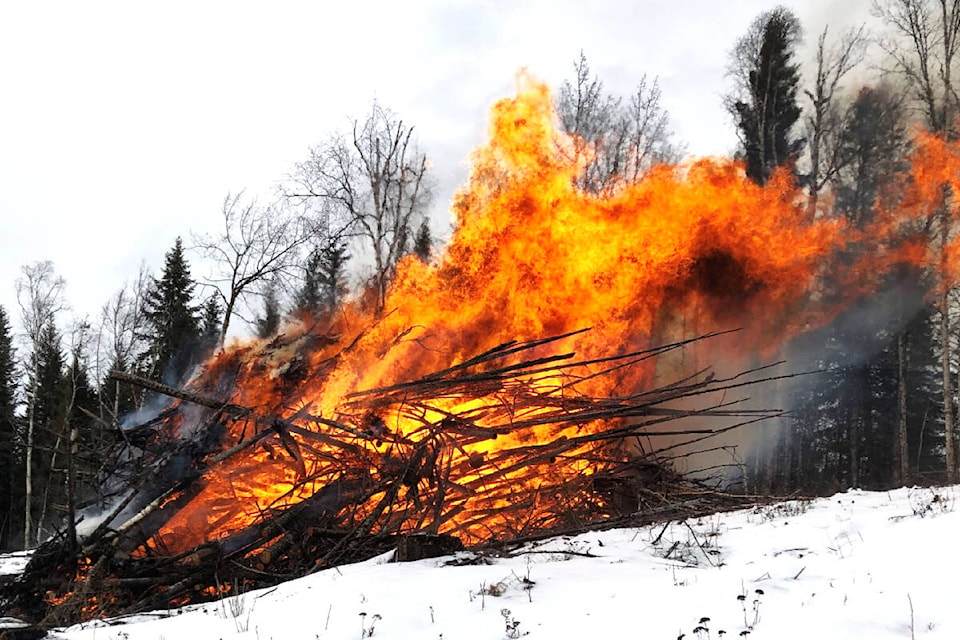By Alan Waters
Special to the Observer
Timber harvesting normally causes a very serious fire hazard when branches, tree tops and non-merchantable portions of trees are left on harvested areas after the merchantable timber is transported to mills for processing.
In B.C., woody debris from timber harvesting was recognized as a very serious cause of wildfires dating back to the Bloedel Fire, (a.k.a. Sayward Fire or the Great Fire), which burned wildly out of control for more than a month and destroyed millions of dollars of decked and standing timber, logging camps, resorts, railway trestles, bridges, logging equipment and other infrastructure. More than 2,000 firefighters struggled relentlessly to control the blaze which scorched over 30,000 hectares of forest near Campbell River during the extremely dry summer of 1938.
The BC Forest Service reacted swiftly with amendments to the Forest Act which required the falling of leftover snags and the burning of debris to eliminate the fire hazard associated with timber harvesting.
For the next seven decades, the BC Forest Service made prompt and excellent fire hazard abatement a priority on Crown and private land alike, where logging occurred. I can remember working as a young forester around Burns Lake and Quesnel between 1980 and 1995 and the Forest Service would inspect every harvested cut-block and write a letter of instructions describing how and when the fire hazard had to be abated. Failure to comply with these instructions resulted in fines.
That all changed when the Wildfire Act and the BC Wildfire Service were created. Today, forest companies or land owners send their own forestry professional to do the assessment, including the ability to say if fire hazard abatement is even required. There is very poor enforcement of poorly written laws, especially on private forest land that is often close to residences.
Many private landowners are not aware of the legal requirements for fire hazard abatement after harvesting because neither the Ministry of Forests nor BC Wildfire Service informs the landowner when they apply for a timber mark to harvest timber on private land.
There are so many instances where fire hazard abatement requirements have not been enforced on private harvesting sites that it could easily be assumed that cleaning up the risks is no longer required.
How is this unacceptable situation allowed to exist when we are repeatedly facing more extreme wildfire catastrophes, year after year?
As a person who, in my career, has carried out prompt and excellent fire hazard abatement on more than 50,000 hectares of harvested land in B.C., I have seen the extreme fire intensity that results from debris piles if they ignite.
The attached picture illustrates a large timber harvesting debris pile that I burned on February 25, 2024, when the temperature was -5 C and the site had just received five centimetres of wet snow. If this pile burned during the peak of the fire season, the homes about 100 meters awayon Feldspar Avenue could easily have been consumed by the resulting wildfire.
Alan Waters’ award-winning forestry career included public and private sector aspects, involving substantial work across many regions of B.C. in wildfire abatement, silviculture, harvesting, roads and more.
READ MORE: ‘Trees going up like Roman candles’ as Cariboo wildfire season starts early
READ MORE: Uzelman: Proactive measures can reduce impending wildfire risk in B.C.
